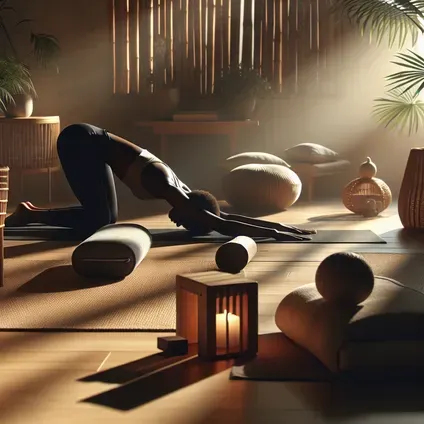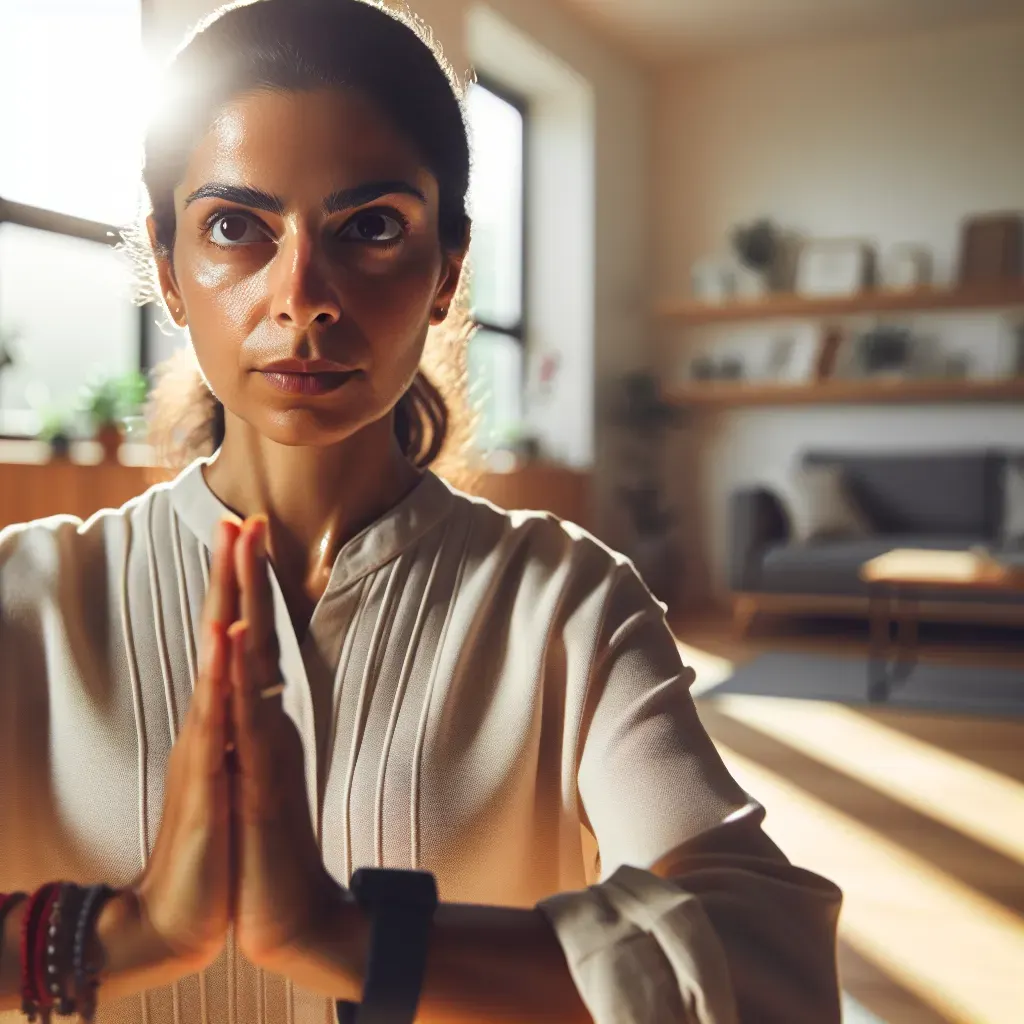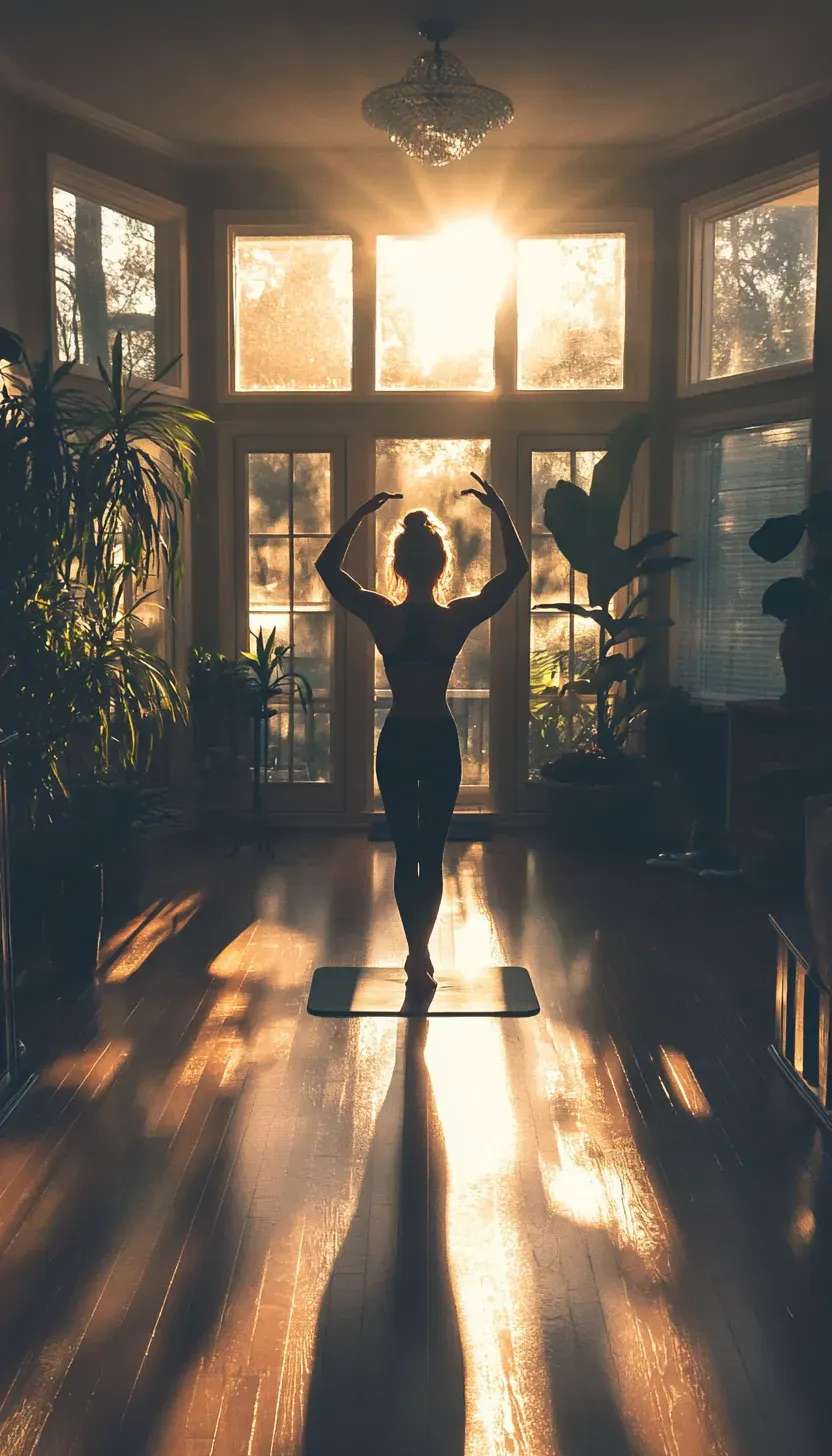Is Vinyasa Flow Yoga Good for Beginners?
Table of Contents
- Is Vinyasa Flow Yoga Good for Beginners?
- What Is Vinyasa Flow Yoga?
- Why Vinyasa Flow Works for Beginners
- Builds Flexibility and Strength
- Encourages Mindfulness
- Improves Coordination and Awareness
- Builds Endurance
- What Might Trip You Up as a Beginner
- The Pace
- Challenging Poses
- Risk of Injury
- Tips to Make Vinyasa Easier
- Choose the Right Class
- Learn the Core Poses
- Listen to Your Body
- Use Props
- How to Find the Right Vinyasa Class
- Teacher Experience
- Online Options
- Reading Class Descriptions
- Final Thoughts
Trying a new kind of yoga can be overwhelming with the poses, the pace, and the pressure to “do it right.” You might wonder: Is Vinyasa flow yoga for beginners, or is it better left to seasoned yogis?
Let’s cut through the confusion.
Vinyasa flow yoga can be a great entry point if you approach it correctly. But it’s not just about stretching on a mat. It’s a dynamic practice that connects movement and breath in a way that can challenge your body and clear your mind.
In this guide, you’ll learn exactly what to expect, what to avoid, and how to make Vinyasa flow yoga work for you as a beginner.
What Is Vinyasa Flow Yoga?
Before diving into benefits or tips, it's important to know what you're signing up for.
The Basics
Vinyasa means “to place specially.” In yoga, that refers to flowing from one pose to another using your breath as the guide. There are no set sequences like in some other yoga styles. Each class is unique, and the pace can vary depending on the teacher.
Core Features
- Continuous flow of movement
- Breath-synchronized transitions
- Emphasis on strength, flexibility, and balance
- Creative sequencing
Each movement is linked to an inhalation or an exhale. For example, you might inhale as you lift your arms overhead and exhale as you fold forward.
How It Compares
- Hatha Yoga: Slower, more static. Great for learning the basics.
- Ashtanga Yoga: Similar flow but with a fixed sequence. More rigid.
- Restorative Yoga: Passive. Focused on relaxation.
Vinyasa stands out for its rhythm. It's often described as “moving meditation.” That movement is what draws people in but also what can intimidate new practitioners.
Why Vinyasa Flow Yoga Works for Beginners
If you're just getting into yoga, you might wonder why this fast-moving style is even recommended. Here’s why Vinyasa flow yoga for beginners makes sense when done right.
1. It Builds Flexibility and Strength
You’ll stretch your hamstrings, shoulders, hips, and spine almost constantly.
Poses like Downward Dog, Warrior II, and Plank help:
- Improves tight muscles
- Strengthening your core and limbs
- Improving posture over time
The repetition of poses builds muscle memory. You’ll feel stronger and more capable with each class.
2. It Encourages Mindfulness
Breath is central to Vinyasa. That focus trains you to stay present.
Even as you move quickly, you're encouraged to:
- Pay attention to how your body feels
- Notice the quality of your breath
- Let go of distractions
This awareness often carries over into daily life. You may find yourself less reactive and more calm after just a few weeks of regular practice.
3. Improves Coordination and Body Awareness
Each pose flows into the next. That flow sharpens your focus and improves your control over how you move.
This can help you:
- Reduce clumsy or awkward movements
- Understand your physical limits
- Improves your sense of balance
For beginners, this is a major bonus. The better you know your body, the safer and more confident you'll feel in any class.
4. It Builds Endurance
Holding poses while breathing deeply challenges your muscles and lungs.
Early on, you might feel winded. But stick with it.
Within a few weeks, your stamina will increase. You’ll be able to move longer, with less effort.
What Might Trip You Up as a Beginner
Vinyasa is accessible but not without its hurdles. Knowing the challenges upfront will help you stay motivated and avoid injury.
1. The Pace Can Be Overwhelming
In a typical Vinyasa class, you’ll move through sequences without long breaks. That’s part of the appeal—but also part of the struggle.
Beginners often:
- Lose track of what pose comes next
- Struggle to keep up
- Feeling rushed
That’s okay. It’s common. You don’t need to nail every transition. You just need to keep breathing.
2. Some Poses Take Time to Learn
Postures like Chaturanga (a low push-up) and Crow (a balancing pose) take strength and alignment. Rushing into them without proper form can lead to discomfort or injury.
Start slow. Focus on understanding a few foundational poses first.
3. Risk of Injury Without Guidance
Without the right cues, it's easy to:
- Overextending your joints
- Compensate with the wrong muscles
- Skip important modifications
A knowledgeable teacher can make a huge difference here. They’ll show you how to adjust poses to your ability level and help you build up safely.
Tips to Make Vinyasa Flow Yoga Easier for Beginners
If you want to enjoy Vinyasa without the stress, you need a smart game plan. These tips will help you ease in and stick with it.
1. Start with Beginner-Friendly Classes
Search for classes labeled:
- “All levels”
- “Slow flow”
- “Foundations” or “Basics”
These tend to move at a slower pace and focus more on alignment.
Avoid jumping into high-intensity or advanced Vinyasa sessions right away. Build your confidence first.
2. Learn the Core Poses
Get familiar with the most common shapes:
- Downward Dog
- Plank
- Cobra
- Warrior I and II
- Forward Fold
- Mountain Pose
You’ll see these in almost every Vinyasa class. Knowing them helps you follow along without having to stop and watch.
3. Listen to Your Body
Ignore the pressure to “keep up.”
If something feels off:
- Take a break in the Child’s Pose
- Skip a Chaturanga
- Step back from a lunge instead of jumping
You’re not there to perform. You’re there to practice.

4. Use Props
Blocks, straps, and bolsters aren’t just for beginners; they’re tools for everyone.
- Use a block to bring the floor closer
- Use a strap to extend your reach
- Use a bolster to support your spine
The goal isn’t to avoid props; it’s to use them so you can work safely and effectively.
How to Find the Right Vinyasa Class
Not all yoga classes are created equal. Here’s how to find one that meets you where you are.
1. Look for Teachers with Experience
A certified yoga instructor (RYT 200 or higher) is a good start. But beyond credentials, look for someone who:
- Explains poses clearly
- Encourages modifications
- Creates a supportive environment
Try a few different teachers to see who clicks with you.
2. Try Online Options First
If walking into a studio feels too intimidating, start at home.
Beginner-friendly channels to explore:
- Yoga with Adriene
- Sarah Beth Yoga
- Fightmaster Yoga
- DoYogaWithMe
Online classes let you pause, rewind, or replay as often as you need.
3. Read Class Descriptions Carefully
Studios usually post detailed class summaries. Look for phrases like:
- “Focus on proper alignment”
- “Designed for new students”
- “Slow and steady flow”
Avoid classes that emphasize intensity, speed, or “power”, at least for now.
Conclusion
So, is Vinyasa flow yoga for beginners?
Yes, if you approach it with awareness and patience.
You’ve learned what makes this style unique.
You’ve seen how it can help build strength, flexibility, and mental focus.
You’ve also explored the common challenges and how to handle them.
The key is not to rush. Start simple. Stay consistent.
Respect your body.
Over time, what once felt fast and confusing will start to feel natural.
And that’s when the real transformation begins, not just in how you look but also in how you feel. Ready to give it a try?
"Once we understand the suitability of Vinyasa Flow Yoga for beginners, it's essential to explore Navigating Modifications: Adapting Vinyasa Flow Yoga Poses for Beginners, ensuring that everyone can adapt poses to their individual needs."
People Also Asked
Q1: Is Vinyasa flow yoga good for beginners?
A: Yes. It builds strength, flexibility, and focus—when practiced at a beginner level with proper guidance.
Q2: What is Vinyasa flow yoga?
A: A style of yoga that links breath to movement in a continuous sequence. Each class is different.
Q3: How is Vinyasa different from Hatha yoga?
A: Vinyasa is more dynamic and fast-paced. Hatha is slower and focuses on individual poses.
Q4: How do I start Vinyasa Yoga as a beginner?
A: Begin with beginner classes or slow flow sessions. Learn core poses and go at your own pace.
Q5: What poses should I learn first?
A: Downward Dog, Plank, Cobra, Warrior I and II, Child’s Pose, and Mountain Pose.
Q6: Can I do Vinyasa yoga at home?
A: Yes. Online classes and YouTube channels offer beginner-friendly Vinyasa flows.
Q7: What are the benefits of Vinyasa yoga?
A: It improves coordination, builds endurance, supports mindfulness, and strengthens the body.
Q8: What should I avoid as a beginner?
A: Rushing through poses, ignoring your body’s limits, and skipping modifications.
Q9: Do I need props for Vinyasa yoga?
A: Props like blocks and straps help beginners modify poses and reduce strain.
Q10: How often should I practice?
A: Start with 2–3 times per week and increase as your body adapts.





